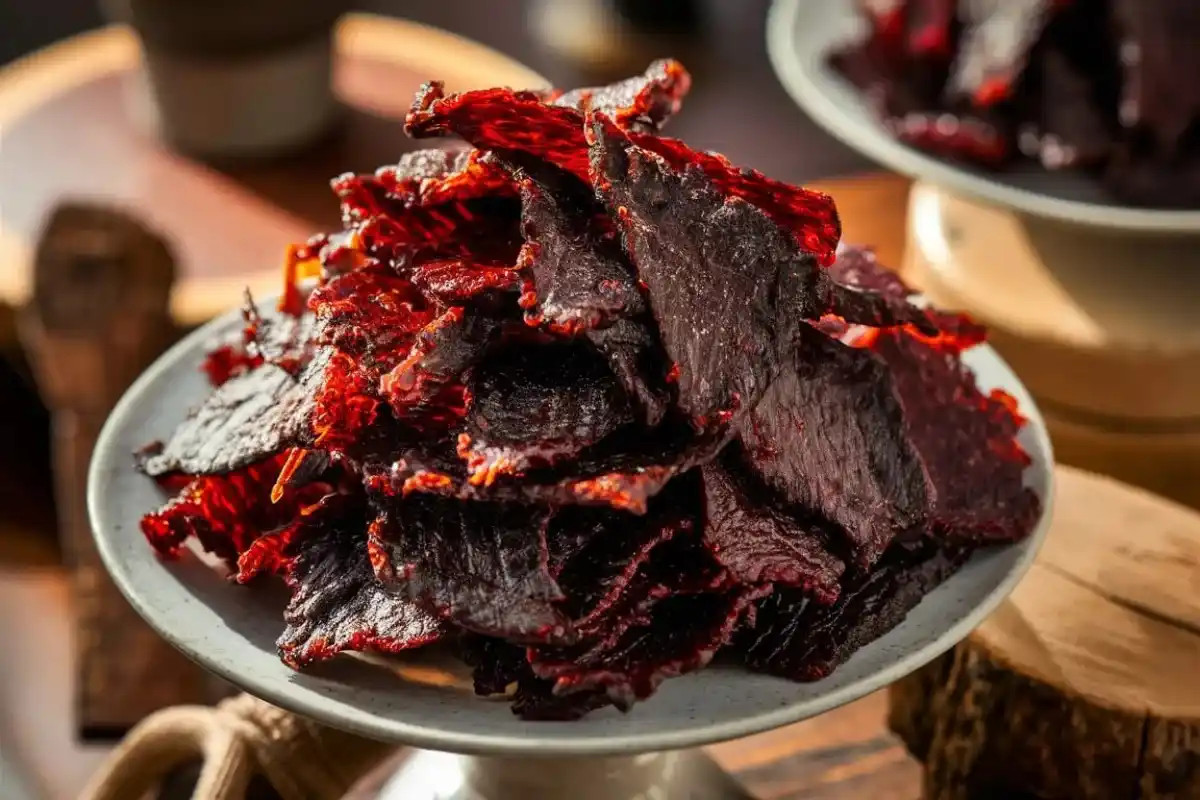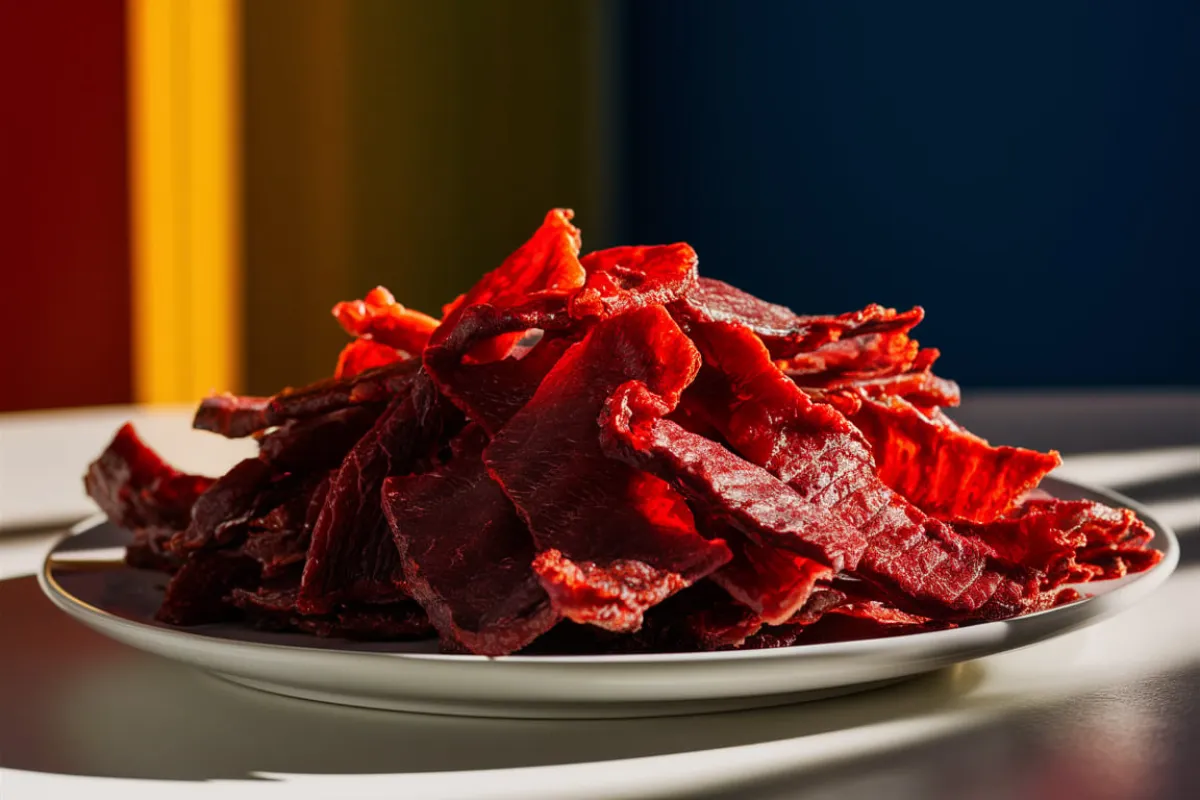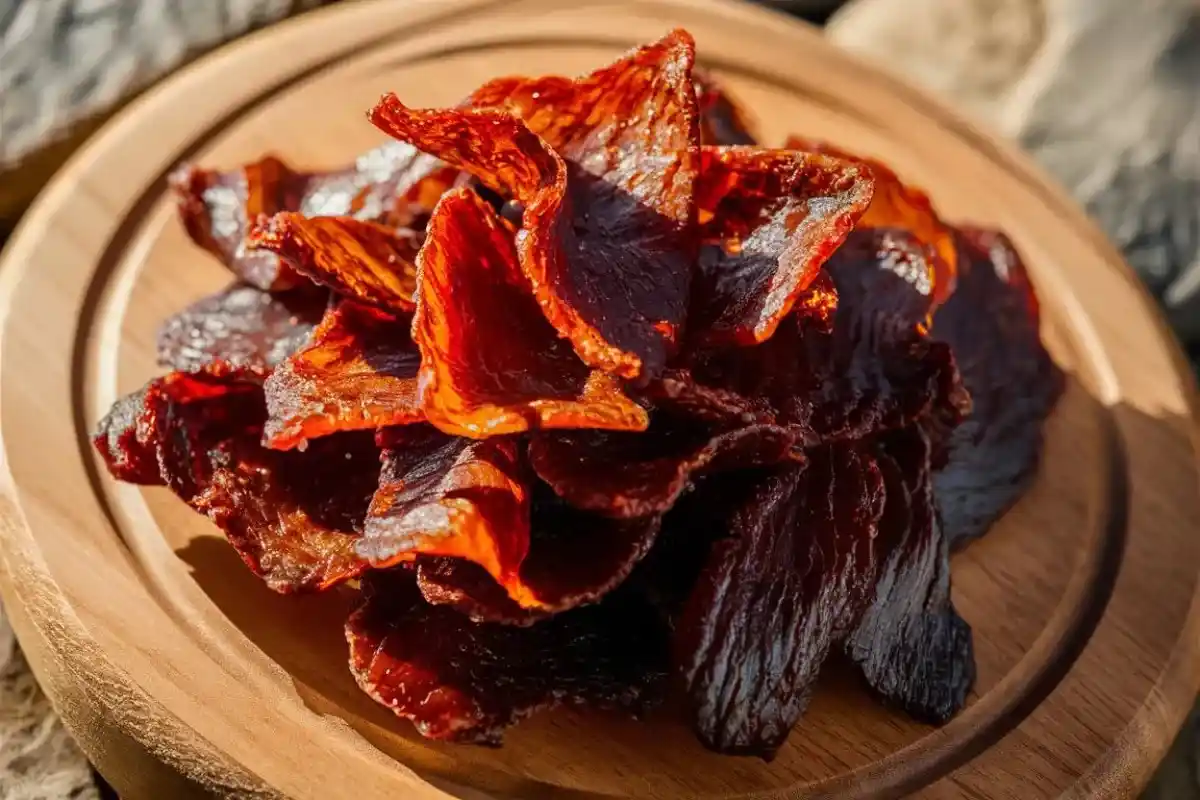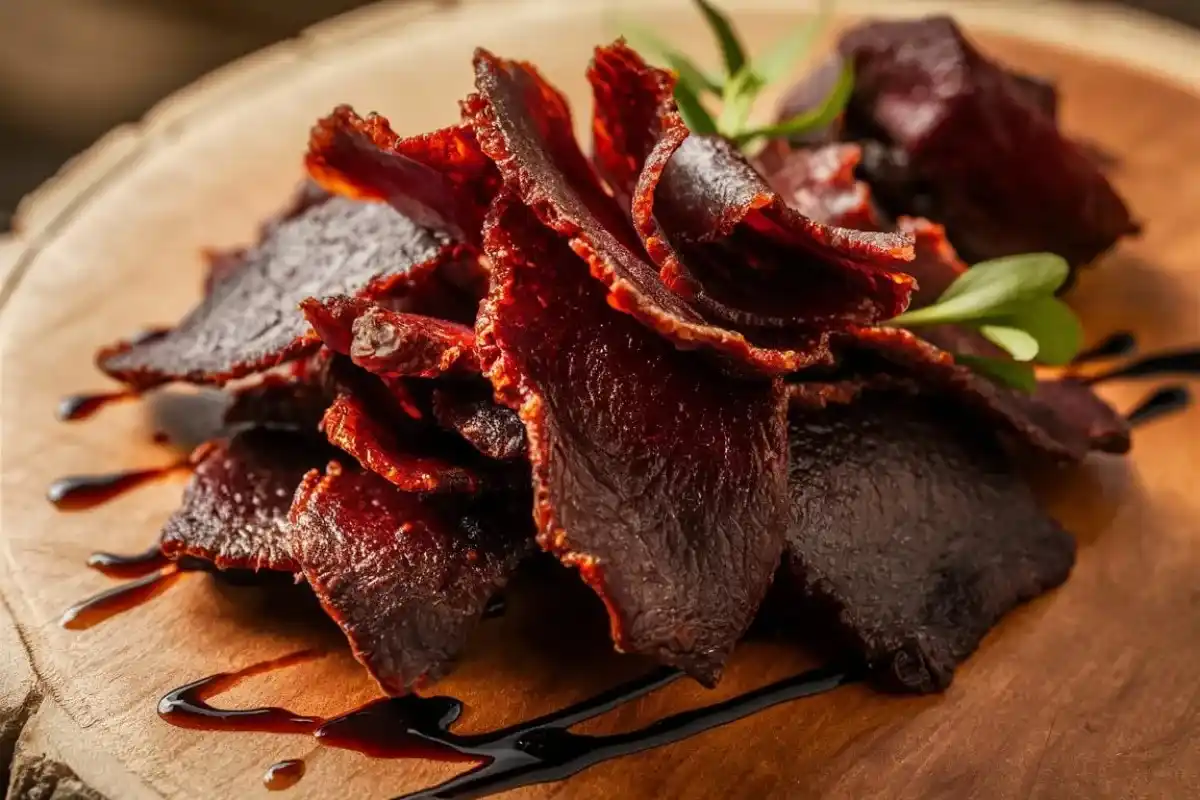Beef jerky is a popular snack cherished for its portability, taste, and long shelf life. Made by drying and seasoning meat, this protein-packed treat is perfect for hiking, camping, or enjoying on the go. However, like any preserved food, many people wonder: Will beef jerky go bad? This guide will walk you through everything you need to know about beef jerky’s longevity, storage practices, and what to look out for to keep your jerky fresh and tasty.
Does Beef Jerky Go Bad?
Yes, beef jerky can go bad over time. Although it’s dried to prevent bacterial growth and spoilage, factors like exposure to air, moisture, and improper storage conditions can still lead to it spoiling. Even though jerky has an extended shelf life compared to fresh meat, it is not invincible. Recognizing the conditions that affect its shelf life can help you store it better and enjoy it longer.
Key Points to Consider:
- Commercially packaged jerky can last up to a year or more if unopened and stored correctly.
- Homemade jerky, which often lacks preservatives, typically has a shorter shelf life of about 1-3 months.
- Spoiled jerky may show signs like mold, an off smell, or changes in texture.
Beef jerky’s longevity depends on a variety of factors, including how it is stored and whether the packaging remains intact. For long-term storage tips, you can learn more by checking out this guide on how to store beef jerky long term.
How Long Does Beef Jerky Last?

Understanding the shelf life of beef jerky is essential, whether you’re stocking up on store-bought varieties or making your own at home. Here’s what you need to know about how long beef jerky can last under different conditions:
- Unopened Jerky:
- Store-Bought Jerky: Commercially packaged jerky often comes with a shelf life of up to 12 months or more. This is primarily due to the use of preservatives, vacuum sealing, and airtight packaging, which prevent moisture and bacterial growth.
- Homemade Jerky: Lacks preservatives and is more vulnerable to environmental factors. If properly dehydrated and stored in an airtight container, homemade jerky can last about 1-3 months at room temperature.
- Opened Jerky:
- Once the package is opened, jerky is exposed to air and moisture, which can accelerate spoilage. Opened jerky typically lasts between 1-2 months if stored in an airtight container and kept away from light and humidity.
- Vacuum-sealing opened jerky can help extend its shelf life, as it reduces air exposure and keeps the jerky fresh for a longer period.
- Comparison of Storage Methods:
- Room Temperature: Jerky stored in a cool, dry place, like a pantry, can last for a decent amount of time. However, keeping it away from direct sunlight and heat sources is crucial to prevent spoilage.
- Refrigeration: Keeping jerky in the fridge helps maintain its quality longer, especially after the package has been opened. It’s an excellent option for homemade jerky, which is more perishable.
- Freezing: For the longest shelf life, freezing beef jerky is an ideal option. It can extend the freshness of both store-bought and homemade jerky for several months.
To explore more about best practices for storing jerky, see the guide on how to store beef jerky long term.
Signs That Beef Jerky Has Gone Bad
Knowing the signs of spoiled jerky is essential to avoid any unpleasant surprises when reaching for your favorite snack. Here’s what to look out for:
- Mold: The most obvious sign that jerky has gone bad is visible mold. This usually appears as white, green, or black fuzzy spots on the surface of the jerky. Mold can develop when jerky is exposed to moisture or stored improperly.
- Off Smell: Fresh jerky has a smoky, savory aroma, but spoiled jerky often emits a rancid, sour, or musty smell. If the jerky doesn’t smell right, it’s best to err on the side of caution and discard it. For more on what to look for when checking if food has spoiled, visit identifying spoiled foods.
- Texture Changes: Jerky should have a firm, chewy texture. If it feels excessively hard, sticky, slimy, or if it crumbles easily, these are signs that the jerky is no longer good.
- Discoloration: While some color variation is normal, especially in homemade varieties, drastic changes in color can indicate that the jerky has oxidized or spoiled.
Factors Influencing the Shelf Life of Beef Jerky

Several factors can impact how long your beef jerky will remain fresh and safe to eat. Understanding these factors can help you store your jerky better and extend its shelf life.
- Packaging Type:
- Vacuum-sealed packaging is one of the best methods to extend jerky’s shelf life. This type of packaging removes air and reduces the risk of spoilage due to oxidation.
- If the package is not airtight, jerky can spoil faster due to exposure to air and moisture. Always check the packaging integrity before purchasing or storing.
- Storage Conditions:
- Cool and Dry Places: Jerky stored in a cool, dry environment lasts significantly longer than jerky stored in warm, humid conditions. High temperatures and humidity can introduce moisture, promoting the growth of mold and bacteria.
- Away from Light: Direct sunlight can degrade the quality of jerky, affecting its flavor and texture over time. Store jerky in a dark cabinet or pantry for optimal results.
- Fat Content:
- Jerky made from lean cuts of meat typically lasts longer than jerky made with fattier cuts. Fat can go rancid over time, even in dried meat products, impacting flavor and safety.
- Seasonings and Preservatives:
- Some commercially produced jerky includes preservatives like sodium nitrite, which help extend shelf life. The seasoning used can also influence how long jerky remains fresh.
Storage Tips to Extend the Shelf Life of Beef Jerky

To ensure your beef jerky stays fresh and flavorful, follow these practical storage tips:
- Airtight Containers: After opening, store jerky in airtight containers to prevent exposure to air and moisture. Glass jars, resealable plastic bags, or vacuum-sealed bags work well.
- Refrigeration and Freezing: Store opened or homemade jerky in the fridge to keep it fresh for a more extended period. Freezing jerky can significantly extend its shelf life without compromising texture or taste.
- Avoid Humid Environments: Humidity is one of the biggest enemies of dried foods. Keep jerky away from humid areas such as near the stove, sink, or windows.
- Proper Dehydration: If you make jerky at home, ensure it is properly dehydrated. Inadequately dried jerky retains moisture, making it susceptible to mold growth.
Can You Eat Expired Beef Jerky?
It’s generally advised not to eat expired beef jerky. While properly stored jerky might still be edible past its “best by” date, its quality, flavor, and texture may have deteriorated. Always inspect the jerky for signs of spoilage, such as mold, off smells, or unusual textures before consumption.
Does Beef Jerky Need Refrigeration?
While beef jerky doesn’t necessarily require refrigeration, storing it in the fridge can extend its shelf life, especially once the package is opened. Refrigeration slows down oxidation and prevents moisture from reaching the jerky, maintaining its quality and taste. This is especially useful for homemade jerky, which lacks the preservatives found in commercially made products.
Frequently Asked Questions About Beef Jerky
Here are some frequently asked questions that can help clarify common concerns about beef jerky:
- Can you eat jerky that’s past its best-by date?
While it’s often safe if stored correctly, always check for signs of spoilage like mold, unusual smells, or texture changes. - How can I keep homemade jerky fresh longer?
Store homemade jerky in vacuum-sealed bags and keep them in the refrigerator or freezer to maximize freshness. - Is mold on jerky dangerous?
Yes, mold on jerky is a sign of spoilage. Discard any jerky with visible mold. - Does beef jerky last longer if vacuum-sealed?
Absolutely, vacuum sealing jerky reduces exposure to air, significantly extending its shelf life. - What’s the best way to store jerky long-term?
For long-term storage, vacuum-sealed packaging stored in a cool, dark place, or the freezer is the best method.
Best Practices for Making Beef Jerky at Home
If you’re a fan of making your own jerky, following best practices is crucial to ensure it stays fresh:
- Use Lean Cuts: Opt for lean cuts of beef like eye of round, top round, or sirloin to reduce the fat content, which can lead to quicker spoilage.
- Proper Seasoning: Season your jerky not just for flavor but also to help preserve it. Ingredients like salt and vinegar act as natural preservatives.
- Dehydrate Thoroughly: Ensure that your jerky is fully dehydrated. Moisture left in the jerky can create an environment conducive to spoilage.
- Store Properly: Once made, store your jerky in airtight containers, vacuum-sealed bags, or in the refrigerator or freezer to keep it fresh for longer periods.
For more in-depth information and recipes, you can explore our comprehensive ultimate guide to beef jerky.
Conclusion
Beef jerky is a convenient and tasty snack with a long shelf life, but it’s important to know how to store it properly to avoid spoilage. By understanding the factors that affect jerky’s longevity, using proper storage techniques, and staying vigilant for signs of spoilage, you can keep your jerky fresh and enjoy it for months. Whether you prefer store-bought or homemade, maintaining the right conditions will ensure that your jerky remains a safe, delicious, and nutritious option for all your adventures.
For more tips on cooking and storing beef products, explore our article on ground beef recipes.

